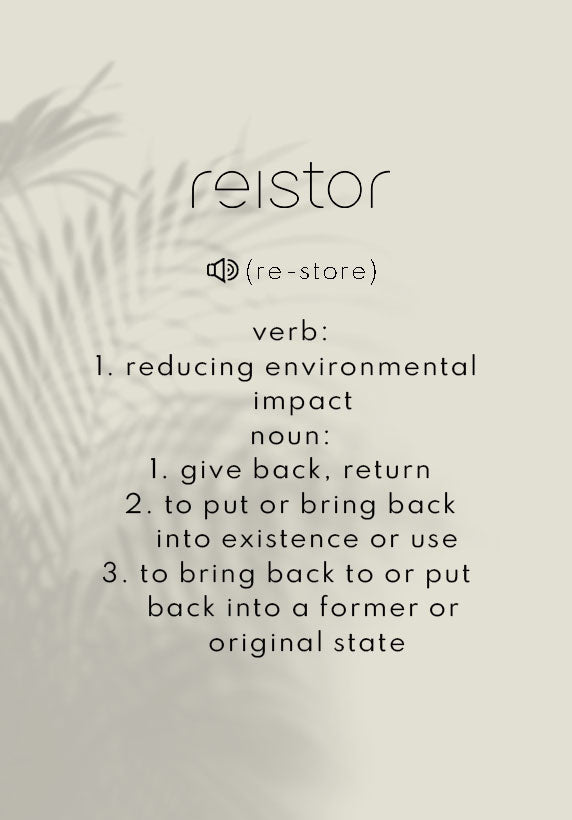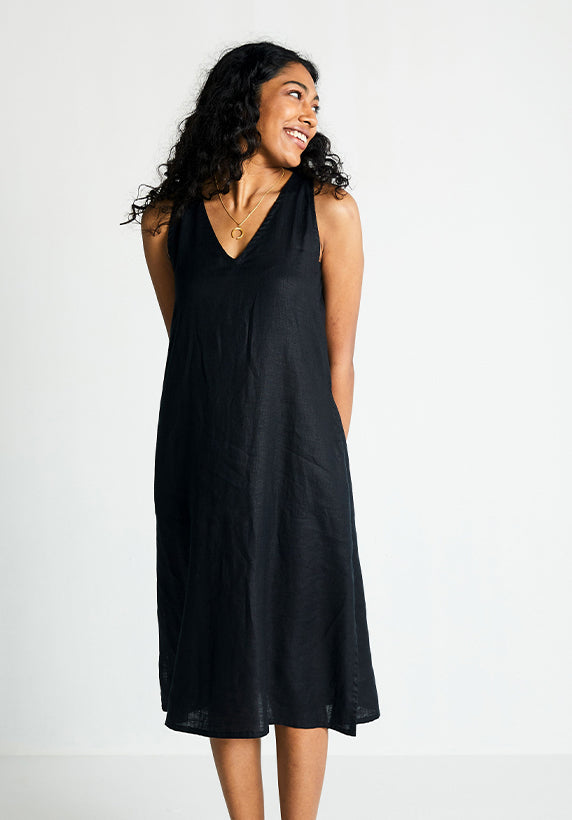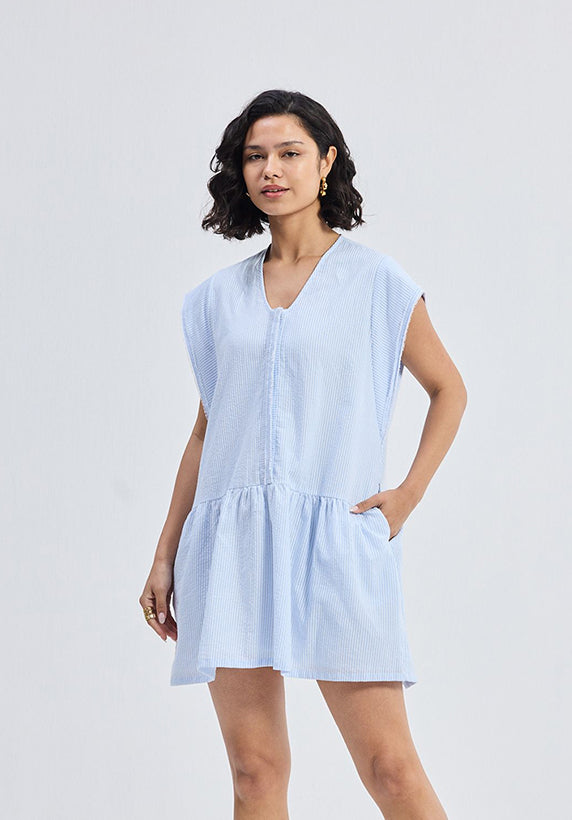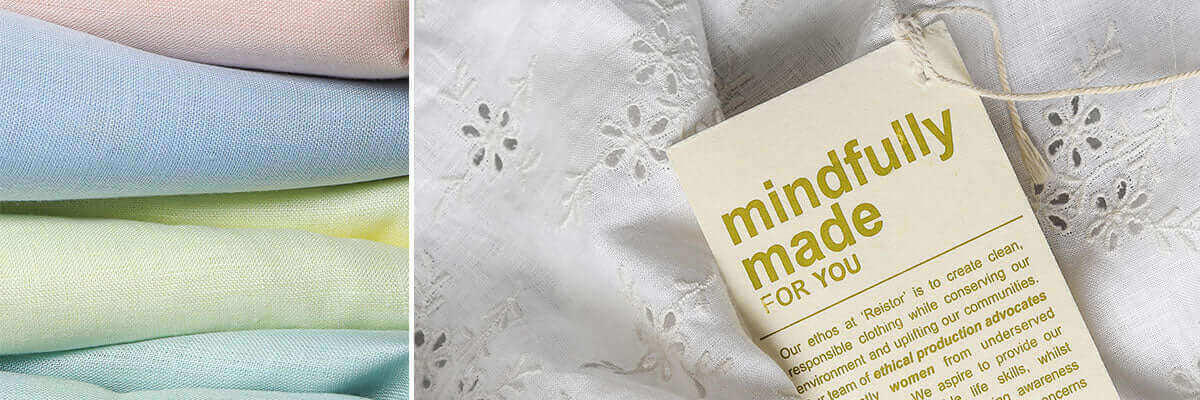These days, we are becoming more conscious of our impact on the environment. For the fashion industry, sustainable fabrics and eco-friendly textiles are becoming a growing trend to reduce our ecological footprint.
Clothing labels are a reliable guide to helping you identify sustainable fabrics. But sometimes, they can be confusing to understand.
No need to worry today! This article will introduce 6 different sustainable fabrics. With these fabrics, you can contribute to a better environment!
What Are Sustainable Fabrics?
Garments made of sustainable fabrics or eco-friendly fabrics are less harmful to our environment. But you might be curious about what sustainable fabric exactly means.
There are three essential factors that determine a sustainable fabric:
- Eco-friendly source of raw materials.
- Not a chemically-intensive production process, including dyeing, softening, and finishing.
- Fair labor practices and eco-friendly garment disposal.
With these in mind, you can identify sustainable fabrics more easily.
Certifications for Sustainable Fabrics
With several essential certifications, you can easily identify sustainable fabrics. Here are some important certifications you keep in mind:
- The Global Organic Textile Standard (GOTS) ensures the material is made with organic fibers and meets strict environmental and social criteria.
- USDA-Certified Organic guarantees responsible cultivation practices.
- FSC and OEKO-TEX work together to certify strict environmental and social responsibility standards.
6 Popular Sustainable Fabrics
Let's begin an exploration of popular sustainable fabric options, focusing on eco-friendly fabrics that are leading the way in environmentally friendly fashion.

1. Organic Cotton:
Organic cotton is one of the most natural fabrics among the sustainable fabrics. Unlike conventional cotton fabrics, organic cotton production uses no pesticides or fertilizers. Plus, it uses 62% less energy and 91% less water than other cotton materials (from The World Counts) ,making it a prime example of an eco-friendly fabric.
Organic cotton not only respects biodiversity but also promotes ethical labor practices. It is a powerful statement against harmful fashion practices.

2. Hemp:
Similar to organic cotton, hemp is also one of the most natural, sustainable fabrics, and a leading eco-friendly fabric choice.
Hemp is a high-yielding crop. Its production requires minimal water and chemicals. Additionally, it helps clean impurities like toxins and heavy metals from soil through phytoremediation.
With these advantages, hemp is more expensive than other sustainable fabrics. But it is still an excellent fabric option for your garments.

3. Linen:
Linen is a naturally sustainable fabric similar to hemp. It is derived from the flax plant and doesn't require many pesticides and fertilizers in its production process.
There are several differences between linen and hemp.
Linen is not as high-yielding as hemp. Its growth needs more specific environmental conditions, which makes it a luxury option. Although it's a little expensive, linen is still a popular fabric option for fashion enthusiasts.
4. Wool:
Sheep wool stands out as a naturally sustainable fabric called Mother Nature's fabric, offering an eco-friendly textile option.
Wool fabric is renewable and a part of regenerative agriculture. Every year, sheep farmers raise sheep without using a lot of chemicals to damage the environment.
Wool is also a durable fabric, so it ensures your garments will last longer. With its temperature-regulating properties, wool is perfect for any season.
Since wool is biodegradable, wool will return to the soil at the end of its lifespan, leaving no trace.

5. Bemberg™ Fabrics:
Have you heard about Bemberg™, a brand name for Cupro? It’s a regenerated cellulose fiber produced by Asahi Kasei. Made from 100% cotton linter, Bemberg™ is not only a sustainable material but also biodegradable and compostable.
The production process of Bemberg™ fibers reduces the environmental impact. They use a closed-loop system to strictly control the chemical substances used in the process. This innovative system can recover and reuse copper and ammonia.
In addition to its sustainability, Bemberg™ is super soft and smooth on your skin. It’s also very breathable, wicking away moisture quickly. Graceful and elegant, garments made from it are truly one-of-a-kind!

6. Tencel™ Fabrics:
Tencel™ is a brand name for several sustainable fabrics made from wood pulp. It mainly includes Tencel Lyocell, Tencel Modal, and Tencel blends.
As a high-end material, Tencel™ is popular for its softness and durability. It’s also breathable and moisture-wicking, ideal for temperature regulation.
Like Bemberg™, Tencel™ is also produced using a closed-loop system to recover water and solvent. Thus, the production process has less environmental impact.
As consumers focus more on the environment, Tencel™ becomes a popular alternative to traditional textiles.
Conclusion
To sum up, exploring 6 sustainable fabrics reveals a variety of eco-friendly options for the fashion industry. From organic cotton to Tencel, each material offers its own environmental benefits, making them some of the most sustainable fabrics available.
As the industry continues to move towards sustainable fashion, these fabrics will become more important for creating a greener and more ethical future.






